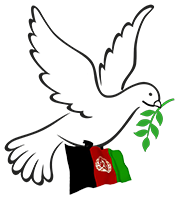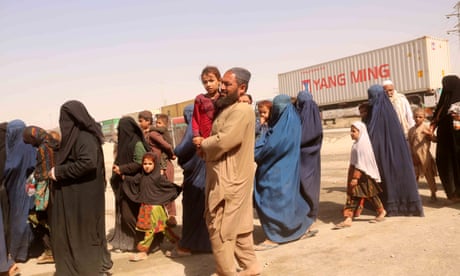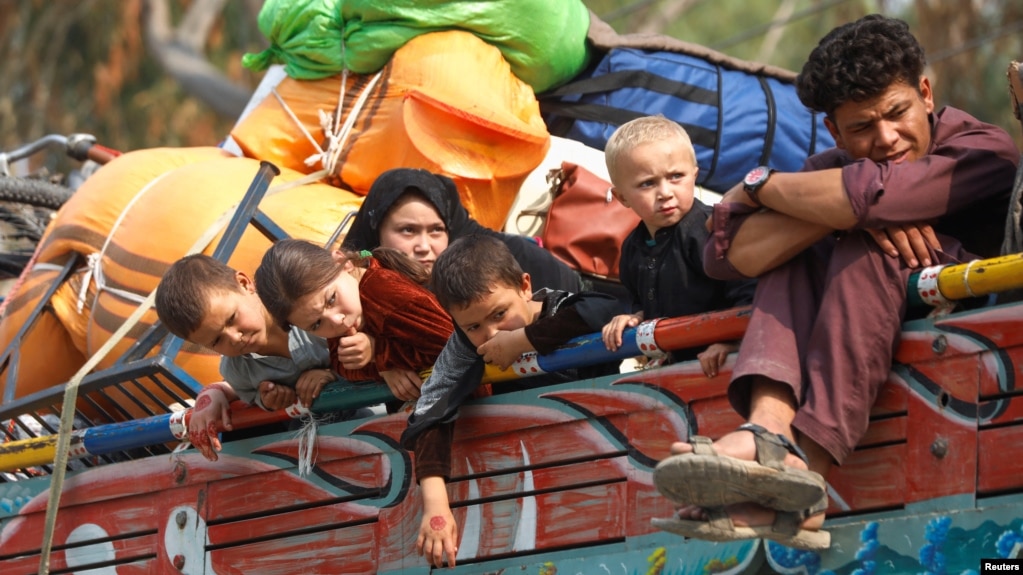For a year after the fall of Kabul and the swift withdrawal of international allies from Afghanistan, Jawed* and his family were in hiding, evading the ruling Taliban as they counted the days waiting for relocation promises from the British government to be realised.
“But that didn’t happen. To this day, two years and two months [later], we’re still living in limbo,” Jawed, a former English teacher for the British Council, said from a hotel in Islamabad.
“They don’t care about their allies, they don’t care about our human life, they don’t think about our situation. Do you want us to suffer and then save a few thousand pounds? Is it logical?”
Jawed is one of more than 2,000 Afghan refugees who risked their lives working for or alongside the British government in Afghanistan and who have been stuck in Pakistan for months – and in some cases years – awaiting resettlement in the UK under the Home Office’s Afghan citizens resettlement scheme (ACRS) or the Afghan relocations and assistance policy (Arap) scheme run by the Ministry of Defence (MoD).
Time is crucial as earlier this month Pakistan announced plans to deport “illegal immigrants” after 1 November, a move that the UN has said will put more than 1.4 million Afghans living in the country at grave risk.
Without the legal right to work or to access education and healthcare, and now with the threat of deportation, individuals that the Guardian interviewed said they felt like prisoners and they expressed regret about having worked for the British government, which they said would expose them to further risk should they be returned to Afghanistan.
“This is a story of government failing and not taking the lives of Afghans seriously,” said Sara de Jong, a co-founder of the Sulha Alliance, which supports Afghans who worked for the British government to resettle in the UK, and a professor of politics at the University of York.
Last week, the first flight bringing Afghan refugees from Pakistan arrived in the UK. Meanwhile, the British government is being sued by two Afghan families awaiting transfer in Pakistan. This month, documents released in court showed many faced prolonged waits after Rishi Sunak halted relocations to the UK in November 2022, saying in all but extreme cases they could not be accommodated in UK hotels.
Months have passed since Jawed’s family arrived in Pakistan. Their visas have expired and they fear leaving the hotel as authorities crack down on immigrants. His wife is heavily pregnant and if they are not relocated soon he fears they will be waiting longer. The family, yet to receive UK visas, are uncertain when they will be relocated.
“We are young and more than two years of our lives are wasted,” said Jawed. “How long do we live? How long are you going to waste our life, our youth, our dreams?”
A government spokesperson said: “The UK has made an ambitious and generous commitment to help at-risk people in Afghanistan and so far we have brought around 24,600 people to safety, including thousands of people eligible for our Afghan schemes.
“We continue to honour our commitments to bring eligible Afghans to the UK, with new arrivals going directly into settled accommodation where possible.”
Khan* has waited more than 700 days in his Islamabad hotel room. With the threat of deportation looming, he fears the Taliban will kill him if he is returned to Afghanistan. He does not leave the hotel’s confines – not even to buy shoes or clothes – fearing arrest by authorities who have gone into hotels and arrested individuals visiting hospitals, according to charities.
“I’m like a prisoner stuck here,” said Khan, a former translator for the British army, who has fewer than 20 days remaining on his UK visa under the Arap scheme. “I don’t know what I have to do, life is very hard here.”
For two years, Khan worked alongside British troops, accompanying sieges and missions that stretched to 19 hours at times. On one occasion, an explosion killed two soldiers he worked with and left him in hospital. He said he accepted the risk that accompanied the work, wanting to serve his country and help people.
“I lost everything,” said a tearful Khan, who lost his father, brother, wife and son in Afghanistan. “[For] two years I am waiting in one room, but I need [a] life, I need a home.”
With the deadline approaching, he worries the government is prioritising resettling families over single individuals, such as himself, who have waited longer.
“In hard times when you were fighting in Afghanistan, I was shoulder by shoulder with you. But now you ignore us,” said Khan. “We want justice. We want your friendship. Don’t ignore us.”
*Names have been changed to protect identities.
 Afghanistan Peace Campaign
Afghanistan Peace Campaign
